Invasive bird problems are real and they’re only going to get worse if we don’t handle them correctly and with care.
On the other hand, your pet bird fleeing is a real risk and you’ll want to do everything in your power to get it back home safely.
The first step to do so is to get familiar with why bird trapping exists and to get a proper cage that’ll be the main player in achieving your goals and you can easily learn all about it through this article.
IN THIS ARTICLE:
The Summary
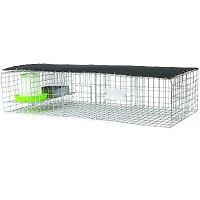

★★★★★
The shade and food and water containers are all meant to keep the birds completely safe when they’re trapped.
Jump To Review
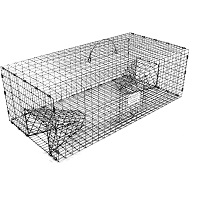

★★★★☆
Due to the top handle, you can choose to place this cage inside of a tree or on the ground, your choice.
Jump To Review
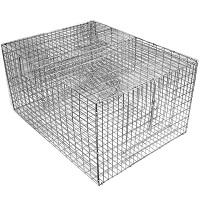

★★★★☆
The cage height helps birds feel safer when captured even though it can contain smaller bird quantities altogether
Jump To Review
What Are Trapping Bird Cages?
They are cages specifically designed to trap a bird automatically when it enters it. They come in all shapes and sizes and are mostly used to trap invasive bird species. Other times, they can be used to capture a pet bird that got lost or a wild bird that got stuck in your home. Whatever your need for them is, you’ll need to learn about more than just them.
How They Work
You place the cage on a bird collection area or in close proximity of your house where your pet bird got lost. You will bait the bird with things like food and water and leave it there if it’s an automatic trap (most are). When the bird goes in to get the food, it gets trapped inside a chamber and can’t exit the cage anymore. All have differently designed entrances and chambers where the trapped birds will stay. They should also have the release doors and preferably, a place where you can put the food and water supplies.
Is There A Difference Between Bird Traps And Trap Cages?
Trap cages are a subcategory of bird traps. They fall under the same name but there are plenty of traps that don’t constitute a trap birdcage. Not all trap cages and traps are used for the same birds so when you know the species of the bird you need to trap, you should buy the trap that gives out the best success rate for trapping that type of bird. We will mention the main types in the following list.
Bird Trap Types
Live traps are cages and traps meant to keep the bird alive when you capture it. Although trap cages that kill the bird instantly are rarely available for purchase, it’s still good to know the difference. The traps listed below are all live traps.
Automatic Trap Cages
These cages will have you do nothing but set the cage up to capture birds. They’re often repeating meaning that you can capture multiple birds in multiple goes. They’re used for larger invasive bird populations.
Humane Trap Cages
These are meant to capture the bird but give it the basic rights it deserves even though it has been captured. They can provide shade, a safe shelter from predators, and food and water as well. Often, these will have a caller bird that will attract others.
Trap Door Traps
This is another humane way to capture birds. They feature a spring-loaded lid and feeding platforms. It’s triggered when the bird steps on the perch to feed. They are painless and can be considered automatic trap cages as well. They’re commonly used to trap small birds in big buildings or public areas.
Clap Traps
These are highly sensitive and the first category that doesn’t fall under trap cages. They have a spring-loaded frame and netting around it. They can be automatic or manual and are usually used to capture ground birds like ring-necked pheasants.
Funnel Traps
You’ll typically find that these are the largest of traps. They can be used to trap a lot of birds and what’s specific about them is that they have a very narrow entrance that leads to a large open area. They’re excellent for catching starlings and many other birds.
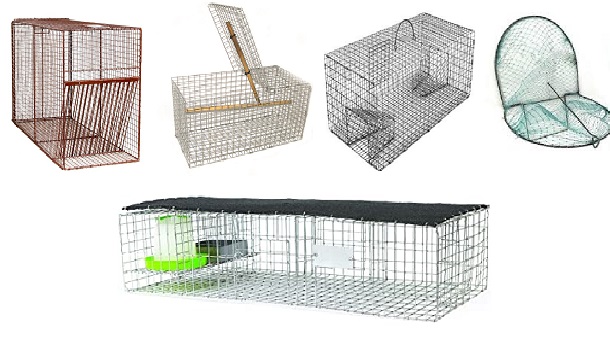

Why Would I Want To Trap Birds In Cages
There are plenty of reasons why someone might want to get a trap cage. Some include showing the bird that has invaded an area kindness, some are more focused on pest control.
For The Sake Of Humanity
If you don’t capture the bird, someone else will and if you do, you can choose to relocate the bird and not even consider it an option to kill it. It’s not that you shouldn’t do it but many people don’t have the heart to kill a bird and that’s reasonable.
Invasive Bird Species
Bird trapping started as hunting for food but in America, it ended up becoming a pest control problem many people want to solve. With over 100 nonnative bird species, Invasive species have taken a toll on our crops, health, and are highly problematic to our native birds as well. the 7 most common Invasive bird species in America include:
- European Starling
- House Finch
- House Starling
- Rock Pigeon
- Eurasian Collared-Dove
- Cattle Egret
- Ring-Necked Pheasant


Birds Crashing Into Houses
Birds don’t just pose a problem outside of houses. It’s quite easy for them to find themselves in your home and when that happens, you’ll want the help of a trap cage to remove them for your own and the bird’s safety.
Birds That Ran Away From Their Home
In some rare cases, you have a bird pet on the loose. Setting up a trap will help you a great deal in getting it safely back to you. Since you want to do it safely, it’s important to know some things about traps and trap cages.
Things You’ll Need To Know To Trap A Bird Successfully
There are many things to think about before even buying a trapping cage that’ll help make trapping a great success. It does take patience though so you’ll have to prepare for that as well. In most cases, simply buying a cage isn’t going to cut it so it’s important to help yourself with the use of water, food, and decoys as well.
Trap Cage Size
Birds are less likely to enter the cage if it’s too small for them. We’re not saying it has to be huge but should be bought according to the size of bird you plan on capturing. You should also think about how many birds you want to capture.
Cage Placement
This depends on the type of bird you are trying to capture as well. Placing the cage high up in the trees gives you a higher chance of capture only for flying birds. For ground-dwelling birds, you want to set them on the ground.
Bird Bait
You can bait a bird into the trap by providing food, water, and shelter. Food should be a birdseed mix, the amount depends on the number of birds you want to trap and the supplies should be replenished daily for the best results.
Decoys
In some cases, one bird is trapped as a caller for other birds to come to its rescue. Larsen traps are often used for it and many people find this a cruel method. As a solution, you can use bird decoys and bird whistle callers although it’s likely that this will generate, less of a trapping success rate.
Being Sneaky
Don’t be sneaky. You want to gain the bird’s trust. Let them see you replenish the food supplies and let them know that you’re not someone that they should fear. You don’t have to set the traps at night either. They can sit there day by day and are sure to catch something over time.
Having Patience
A good trap is a good trap regardless of whether or not you’re catching something. Although the success rate is high and you can usually trap plenty of birds daily, at other times, you will have to wait for a few days. It’s because the birds are not the only animals that’ll be interested to get the food you set out as bait. Therefore, you need to check regularly if some birds are trapped.
Safety First
Not all traps are unsafe for humans but the ones with spring-loaded frames that have high sensitivity should be the ones you’re the most careful with. One such trap is a claptrap. It might not hurt you seriously but you’ll still want to tread carefully.
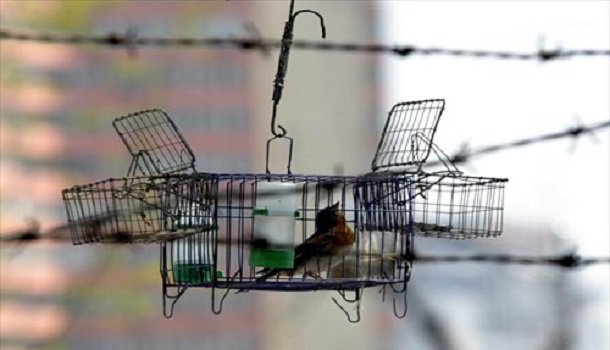

Best 5 Bird Trap Cages
What we wanted to focus on with these cages was to make them as safe as possible for the bird or birds that are going to get trapped. We made sure that they feature extras, a bird-sage construction so that they’re reusable.
Bird B Gone Trap Bird Cage
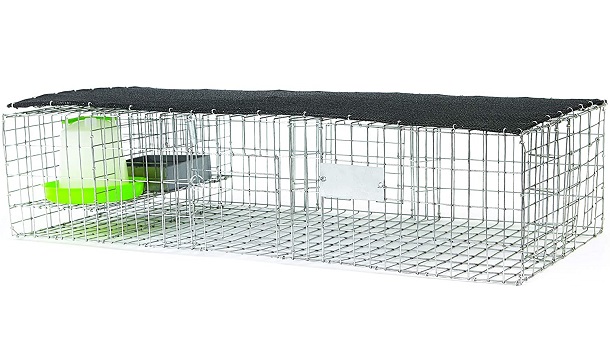

SPECIFICATION:
Material: Stainless Steel
Accessories: Water And Foor Container, Shade
Suitable For: Pigeons
Bird Capacity: 12
Three doors will allow the birds to enter this cage. There is one entry door so the birds that go in, can’t find their way back out of it. The doors feature doors guards to ensure successful and safe trapping.
The shade is located at the top and prevents the trapped birds or the caller birds from being exposed to the sun or rain too much. The water and food containers are made out of plastic.
You’ll get to remove the birds from it using the top center access door. The pigeon trap is also going to be easy to relocate since it only weighs 10 lbs. It’s made as a ground-dwelling bird cage trap.
Safety:
Size:
Funcionality:
AVERAGE PRICE
$50 – $100 varies from webshop to webshop: Amazon, Walmart, eBay
WHY TO BUY
- Features a shade to protect birds from direct light exposure
WHY TO AVOID
- Made only for ground dwelling birds
Tomahawk Trapping Bird Cage
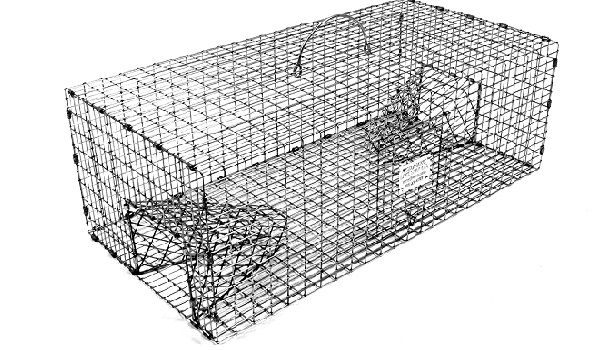

SPECIFICATION:
Material: Alloy Steel
Accessories: No
Suitable For: Sparrows
Bird Capacity: 20
This is a funnel cage with two entrances on each end that narrow down and lead to the single-chamber where birds will be trapped. It’s targeted as a sparrow cage trap although you can use it to trap other birds as well.
In case you’re using it for sparrows, it can hold up to 20 sparrows at once. It doesn’t come with a food or water container but you should bait the trap with food and leave the water close to or in the cage.
It’s recommended that you bend the wires on the narrowest entrance parts just a little to ensure that birds really can’t get out. To release the birds, all you have to do is pull the level and you can even carry the cage around since it weighs only 4 lbs and features a top carry handle.
Safety:
Size:
Funcionality:
AVERAGE PRICE
$80 – $100 varies from webshop to webshop: Amazon
WHY TO BUY
- You can hang it someplace and carry it with the top handle
WHY TO AVOID
- The entrances might have to be tweaked to prevent birds from getting out
Bird B Gone Sparrow Trapping Bird Cage
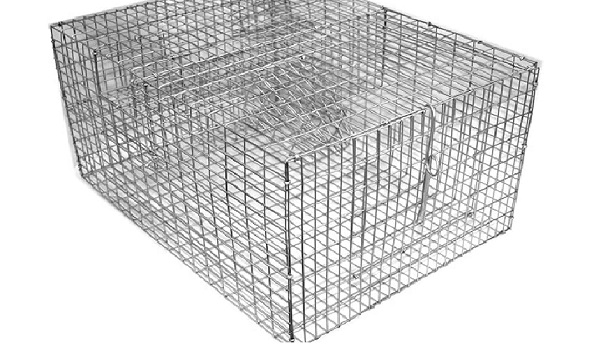

SPECIFICATION:
Material: Stainless Steel
Accessories: No
Suitable For: Sparrow
Bird Capacity: 10
The stainless steel build prevents this cage from rusting in various extreme weather conditions that the cage will most certainly face. It has 2 chambers and 2 levels. It’s a repeating trap so you can reuse it easily.
It’s taller than most and the reason for that is to ease the bird’s mind and prevent them from having that ”I’m captured and scared, I Have to panic” feeling. 10 sparrows should easily fit inside.
When you have to transfer it, it’s going to be simple to do so since it weighs only 4 lbs. It is ideally a sparrow trap but you might catch other ground-feeding birds inside as well.
Safety:
Size:
Funcionality:
AVERAGE PRICE
$60 – $90 varies from webshop to webshop: Amazon, Walmart, eBay
WHY TO BUY
- It’s taller to ease captured birds
- Has a side release door that’s easy to use
WHY TO AVOID
- Can’t hold that much birds without them feeling cramped
Wcs Catching Bird Cage
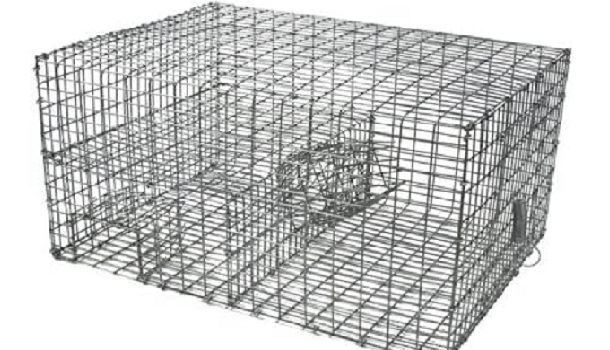

SPECIFICATION:
Material: Alloy Steel
Accessories: No
Suitable For: Sparrow
Bird Capacity:
The trap features 2 small entry points and it’s a play on the classic funnel trap. The release door is located on the side and slides up to open. It doesn’t have any moving parts that might scare birds so it’s considered a passive trap.
The entrances feature spines. They’re bent in a way so that the birds can easily enter the cage but it will prevent them from escaping once they’re inside.
It features 2 chambers and food bait should be abundant in the larger chamber. The large chamber is accessible through another tunnel entrance that starts inside the first smaller chamber.
Safety:
Size:
Funcionality:
AVERAGE PRICE
$50 – $80 varies from webshop to webshop: Amazon
WHY TO BUY
- You can easily release non-targeted birds
- Has 2 trap entrances
WHY TO AVOID
- Too small for trapping large bird quantities
Mets Catching Bird Cage
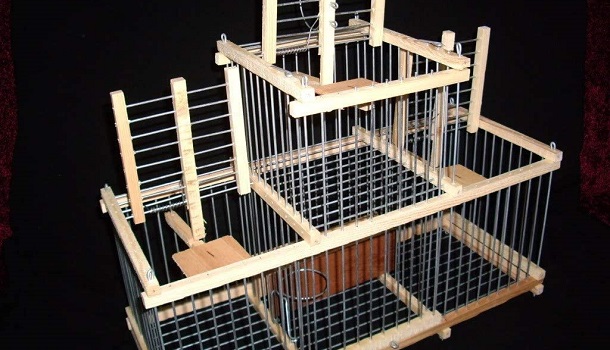

SPECIFICATION:
Material: Wood, Iron
Accessories: Water Holder, Perches
Suitable For: Finch
Bird Capacity: 3
The cage has 4 chambers in total. The ground-centered chamber has other chambers surrounding it from the left, right, and topside. This is where the caller bird will go to. It has a lopped wire where a plastic food and water container can go to.
Each trap features a small platform perch where the birds should land when baited with the caller bird or food. Upon the birds’ arrival, the platform collapses and the so far opened top doors close.
It has a wooden frame and wire sides. Note that each chamber is really small and you can only use it to trap smaller birds like house finches and sparrows.
Safety:
Size:
Funcionality:
AVERAGE PRICE
$50 – $70 varies from webshop to webshop: Amazon
WHY TO BUY
- Has a special chamber for the caller bird
- Features perches that activate the trap doors
WHY TO AVOID
- The trap bird chambers are really small
- Might not hold well in extreme weather due to the wood build
Homemade Bird Traps
There are plenty of people that don’t use commercially available traps to capture birds. Some make their cages while others put to good use things like empty cola cans. We’ll list a few options here so you can choose your preferred method.
Making A Wire Cage
This trap cage will look more like the ones you can buy since it’s made out of wire. You’ll need to go to your local hardware store to buy the wire and you’ll need multiple types of pliers and a ruler. If you follow the instruction in the video linked below, you can make two trap cages.
Making A Natural Cage
The things you’ll need are wooden sticks or branches, a strong string, and a flat wood board. The size of the flat square board depends on the size of the cage you want to make and it’ll have a hole in the middle. For the whole assembly process, check out this video.
Cola Can Trap
For this method you’re going to need an empty cola can, some sticks, a nail to puncture a hole into the can, and a few strings. This might have you risk the bird trying and succeeding to flee but it’s still a useful trick. For more details and further instructions, you can check out the video below.
Bottle Method
You should aim to get a big plastic bottle, like a 2 or 3 gallon one if it’s possible. You’ll cut the top partially, make a few holes and use the string so that the trap can activate. You’re also going to need a few sticks but to really get the hang of it, you can check out the video we’ve linked below.
We’d definitely recommend the DIY cages or at least the traps that trap the bird in an enclosed space so that they can’t set themselves free and flee away to safety.
Bird Exterminators
If all else fails and if the bird you want to trap is protected by the migratory bird treaty act so it can’t be handled by average joe, it’s time to contact a professional that will do the job for you. On average, you’ll pay around $350 – $650.
Is Bird Trapping Legal?
In most cases, it is legal to trap birds but some might have you call for bird control so that they can handle the problem legally. What is also illegal is messing with the traps already planted by someone else.
Illegal Bird Trapping Species In America
Most birds native to America are protected by federal law (the Migratory Bird Treaty Act). This act states:
”No person may take, possess, import, export, transport, sell, purchase, barter, or offer for sale, purchase, or barter, any migratory bird, or the parts, nests, or eggs of such bird except as may be permitted … or as permitted by regulations.”
If you want to know about the exact species, you can find them listed in the 50 CFR 10.13.
The Reality Of Trapping Birds
How Can I Avoid Killing The Trapped Bird?
Unfortunately, capturing an invasive bird likely means that you will have to kill it. The other option is to relocate it and release it to the wild but there is a chance it might come back. You can also call your local wildlife rehabilitation center for further instruction, they might even take the bird off of your hands
Humane Way To Kill Birds
Please note that we do not support killing birds by any means. We do know, however, that some people are still going to do it so we’d offer a humane solution to put it down. You can put the trap with the bird into a water bath. The water will kill them in about 5 seconds and even though it doesn’t sound humane, it’s the best way to do so.
WE DO NOT SUPPORT THE KILLING OF ANY BEING AND DO NOT CONSIDER IT HUMANE BUT WE ARE AWARE THAT SOME PEOPLE DO IT SO WE INVITE THEM TO DO IT AS PAINLESSLY AS POSSIBLE.
Can I Keep The Trapped Bird As A Pet?
In some cases, it would be legal to do so but most times it isn’t. Even if you could steer clear of felonies that often come with keeping wild birds as pets, it’s simply unethical. It’s better to buy a bird in a pet shop or to adopt one. Then, you’ll for sure know that the one you got can be a pet.
To Sum Up
We tried to focus on bird safety with these and the one that keeps the bird safe the best is definitely the Bird B Gone Trapping Bird Cage. It has shade, water, food containers, and a decent amount of space to fit plenty of birds inside. The trap cages are usually purposed for wild birds just like the suet cage bird feeders.


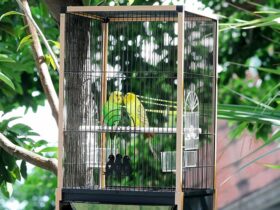











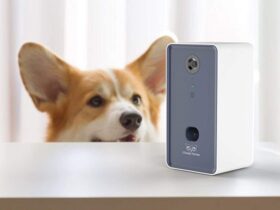
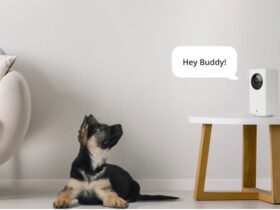
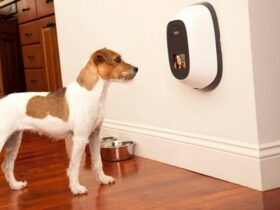

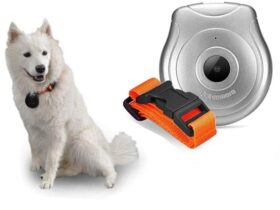

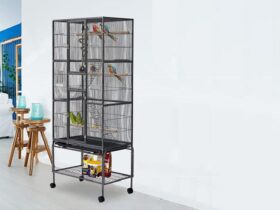
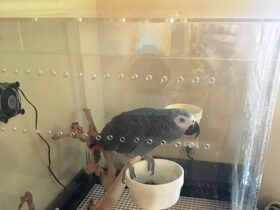
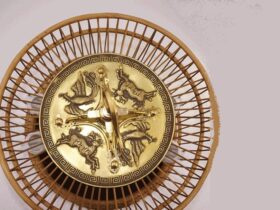
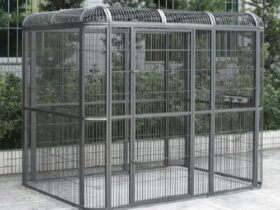
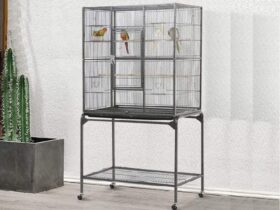
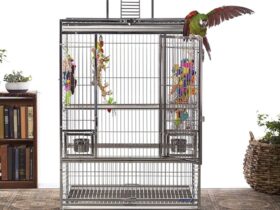
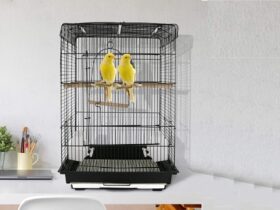
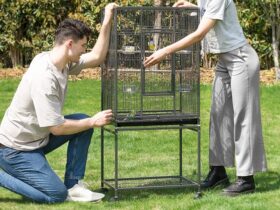
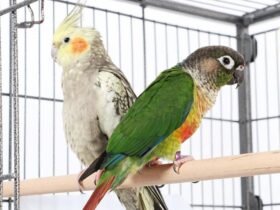
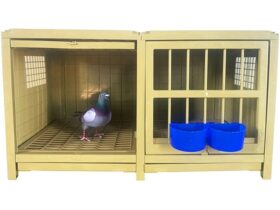
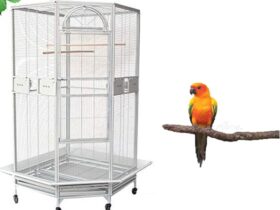
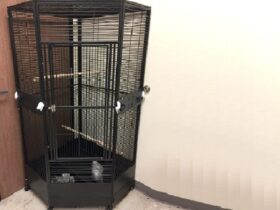
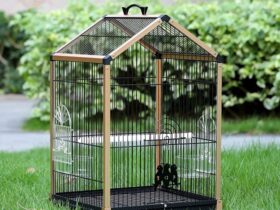
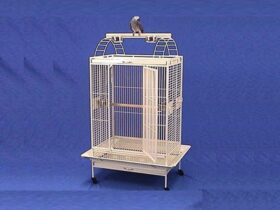
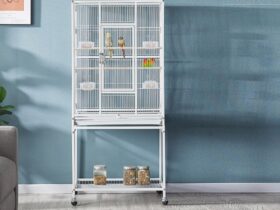
Leave a Reply